Lake Seaplane
Sold July 15, 2002 - Sorry!
![]()

Smith Mountain Lake, 1999
More pictures below - click here
N3ZQ is a 1976 Lake Buccaneer (LA4-200):
| |||||||||||||||||||||||||||||||||||||||||||||||
1650 Total Time Airframe. | |||||||||||||||||||||||||||||||||||||||||||||||
200 horsepower engine, Lycoming IO-360-A1B6. 2000 TBO.
| |||||||||||||||||||||||||||||||||||||||||||||||
Max gross weight 2684 lbs. | |||||||||||||||||||||||||||||||||||||||||||||||
Excellent avionics:
| |||||||||||||||||||||||||||||||||||||||||||||||
|
Many popular modifications:
|
![]()

Taken September 2001 at Lake Central Air Service

Taken September 2001 at Lake Central Air Service. ELT is at right; coiled
wire is a separate external antenna for a handheld radio

Stormscope is immediately below right yoke. Above right yoke is the electronic
voltmeter/ammeter. To the right of that is the digital fuel flow meter.
The intercom controls are immediately below left yoke; to the right of the
intercom is the autopilot. On the hydraulic panel are four lights for the
auxiliary fuel tank pumps. Also, on the extreme right, note the
custom-built tilted subpanel to make the five engine gauges readable from the
pilot's seat.
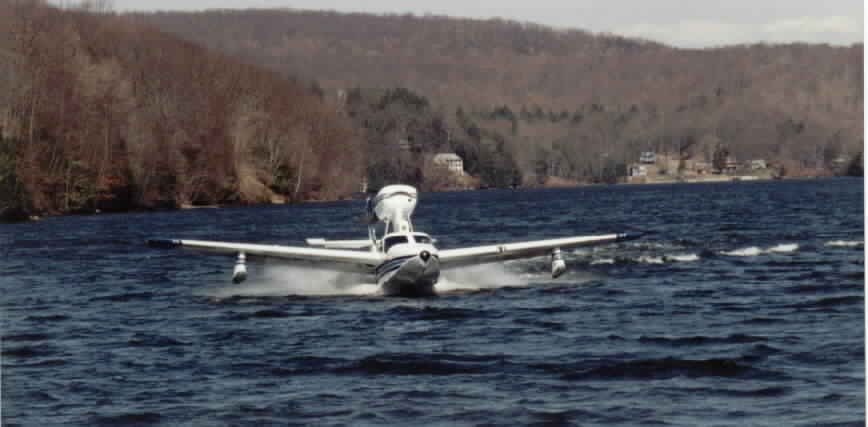
Lake Zoar, Connecticut, 1998
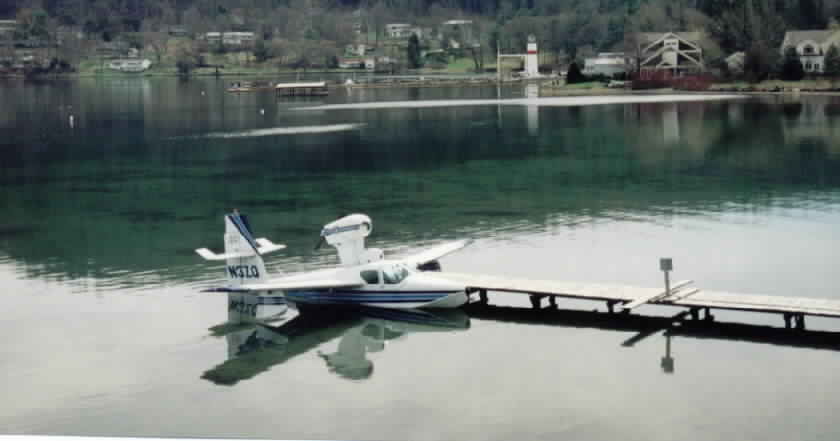
Otsego Lake, New York, 1997
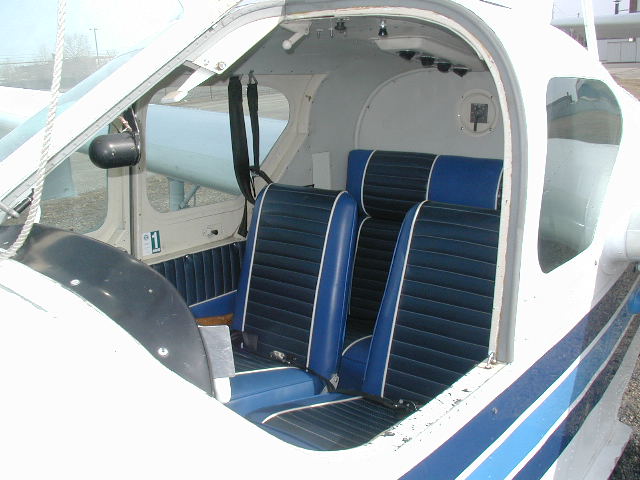
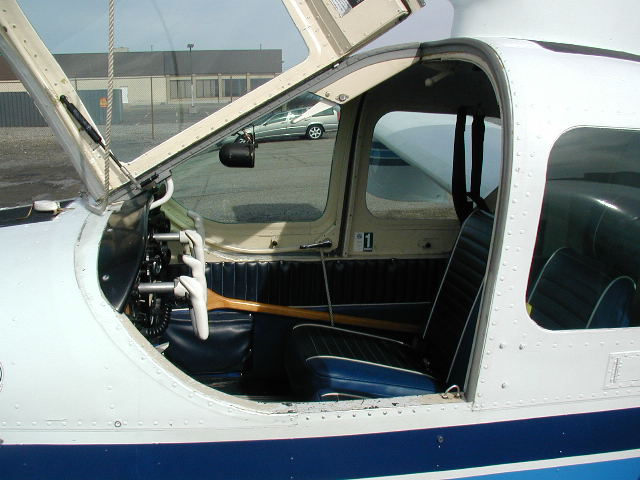
Plane comes complete with two varnished paddles ("auxiliary power
units")
and compressed-gas door-opening struts (handy for loading and unloading)
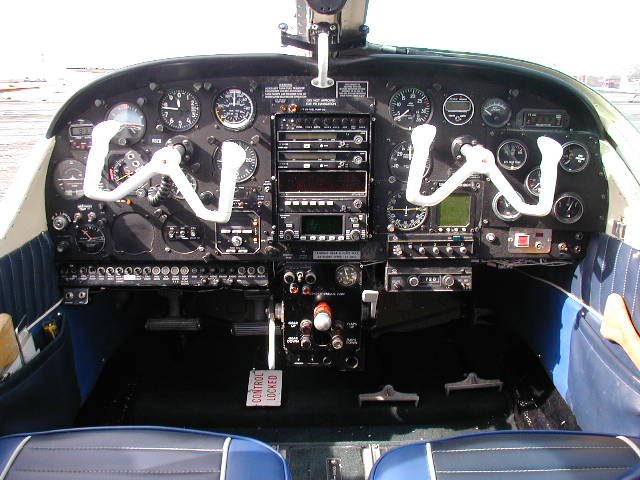
The rudder pedals on the right side fold down. Note built-in rudder gust
lock. (There is an aileron gust lock too, I removed it before taking the
photo.)
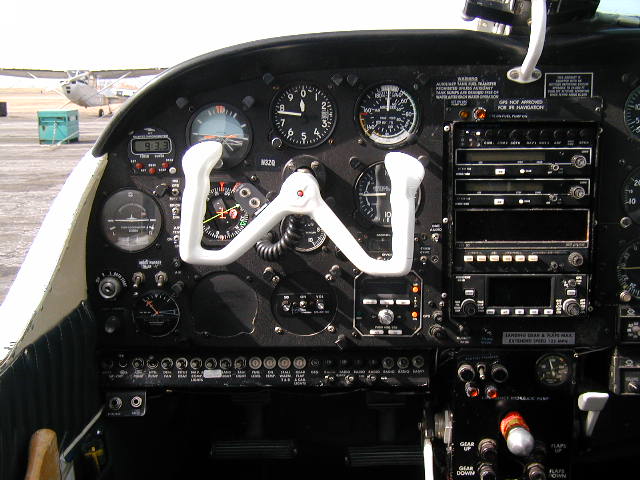
The airspeed indicator has the red line moved to 155mph due to an STC.
The HSI has a switch so that you can choose its NAV input - it can track either
to the KNS-80 VOR/RNAV unit, or to the KLN-90 moving map GPS.
The autopilot is an S-Tec two-axis autopilot which features wing-leveler mode, heading mode, or NAV mode. It has altitude hold. There are two autopilot buttons mounted on the yoke ("Autopilot Disconnect" and "Alt Hold On/Off).

Here you can see the new tachometer (installed 229 hours ago), the electronic
voltmeter/ammeter, the EGT gauge, and the digital fuel flow meter (a lifesaver -
shows actual number of gallons used, to 1/10 of a gallon).
Directly below the yoke is the BFG WX-900 StormScope. To the right of the yoke is a custom subpanel that was installed by Lake Central. It is tilted towards the pilot to make the engine gauges easier to read from the left seat.
Below the subpanel are the switches for the two automatic electric bilge pumps. (One has a built in fuse.) To the right of those are the headphone jacks for the co-pilot. Note the Push-to-talk switch in the middle of the yoke.
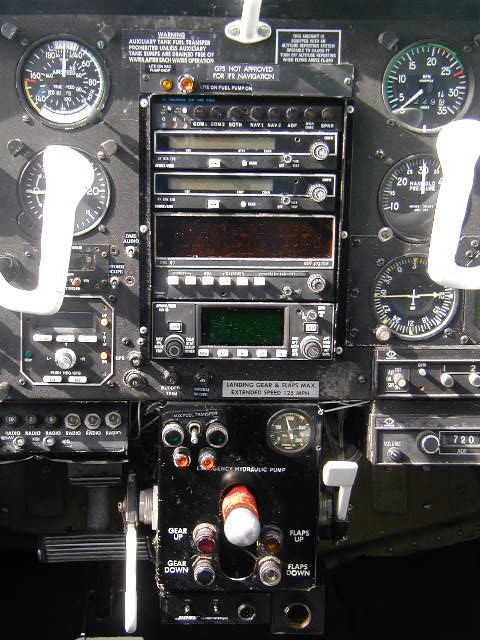
In this picture you can see the radio splash guard, a custom-made black metal
strip to keep any splashes from dripping down the panel and getting into the
radio stack. Also three other custom items:
| Above the audio panel you see two orange lights. The first is part of the automatic standby vacuum system. In the event of a failure of the engine-driven vacuum pump, the light will illuminate, and vacuum pressure will be taken from the engine manifold, thereby keeping the gyros spinning. | |
| To the right of that light is a dimmable orange light that comes on whenever the pilot has turned on the electric fuel pump ("boost pump"). This is to prevent the pump from being forgotten and left on, thereby shortening its life. | |
| On the lower panel, just above the gear-up light, you see two green lights and two orange lights. The green lights indicate power is flowing to the auxiliary fuel transfer pumps - but that doesn't mean much since the pumps might be broken or there might not be any fuel in the aux tanks! I had an option put on - a pressure sensor in each transfer line. The orange lights glow only when fuel is actually being moved. As soon as they go out, you know it's time to turn off the pumps. $1000 well spent? Well I think so, since without these lights, you would never know if one pump was broken and not functioning. |
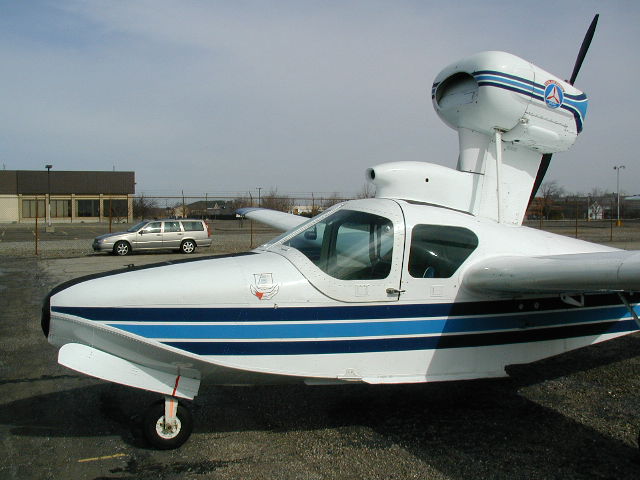
You may wonder about the Coast Guard Auxiliary and Civil Air Patrol emblems that are on the plane. As a volunteer member of both organizations, I used the plane to fly safety patrols for the Coast Guard and practice searches for Civil Air Patrol. No flight for either organization ever required salt water use. The emblems are adhesive stickers which will were removed by the new owner at time of sale.

The plane has a powerful cabin heater which was overhauled in 2001 and has been
used less than 5 hours since then. The
streamlined (Renegade-style) heater cover is said to improve cruise speed by improving the air flow through the propeller. Additionally, this
plane is equipped with a non-motorized summer air vent. That means in
summertime, you can remove the heater and put on the much smaller vent, thereby
increasing your useful load by 35 lbs. and making even better airflow through
the prop.
In this picture you can also see the electronic outside air temperature gauge (OAT) which is mounted in the windshield. It is a tiny battery-operated unit that gives digital OAT readout in F and C. Its best feature is that the external probe is tiny, about the size and shape of half an almond.
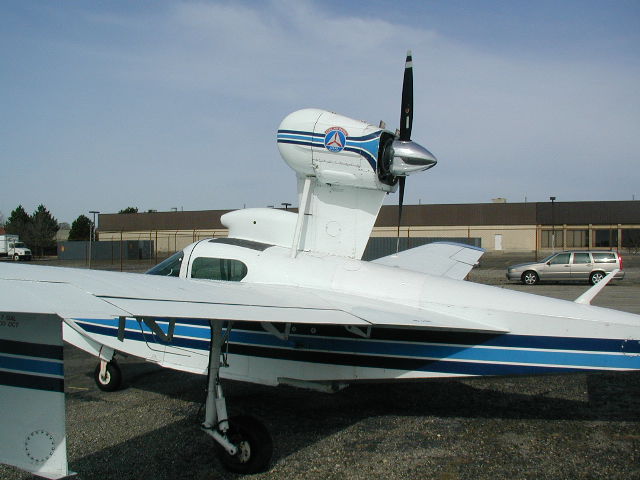
The plane has a chrome spinner - a nice touch added by the previous owner.
Both main gear legs were repainted at the last annual.
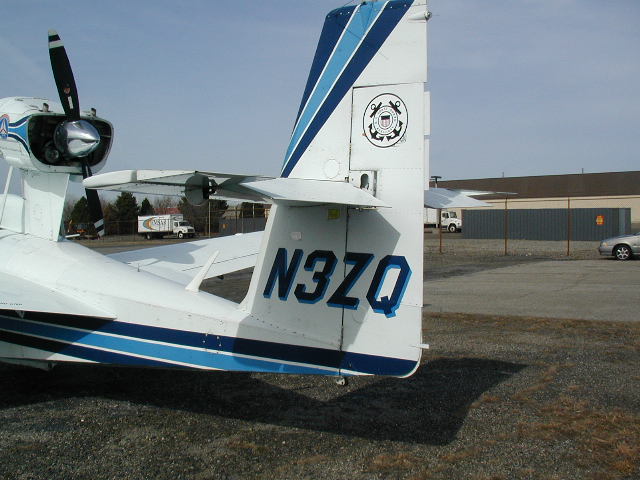
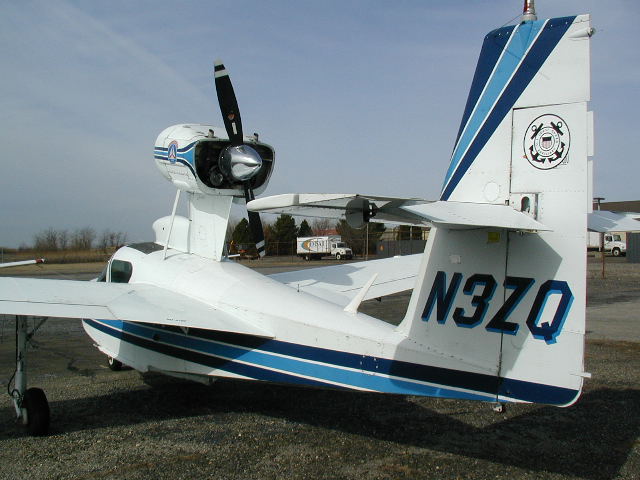
See the tailwheel? That was an option installed by Harry Shannon at Amphibians
Plus in Florida. It keeps the tail from scraping on a concrete ramp when you
taxi into the water.
The propeller was overhauled in 2001 while the new engine was being installed.
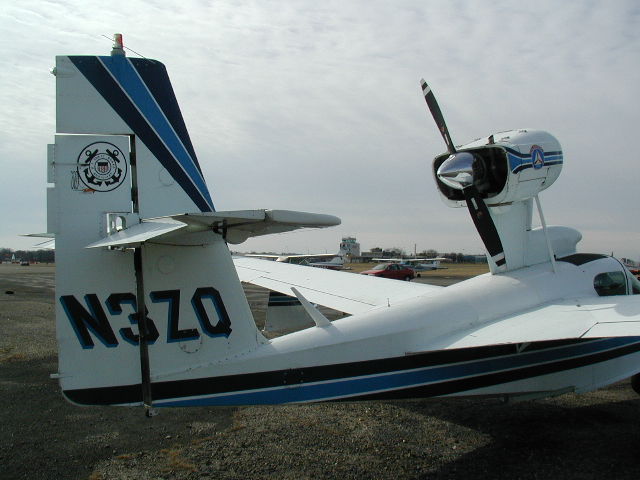
Just aft of the Coast Guard Auxiliary emblem you can see the electric rudder
trip. An expensive option but VERY nice to have for cross-country flights!

The red stripes on the nose gear and nose gear doors are made of reflective tape
and are an aid to verifying that the nose gear is down. At night the
landing light reflects off of the tape, and you can clearly see in the mirror
that you have "all three down"

The top of the nose on Lake Buccaneers is made of fiberglass. This plane's nose
top was replaced in 1998.
Here you can also see the oil cooler door. (It was closed in this picture but is opened when flying in weather above freezing.) That door was installed on the cowling as part of the Winterization Kit.
![]()
Plane sold on July 15, 2002. New owner is Canadian and repainted the airplane tail numbers with a Canadian tail number.